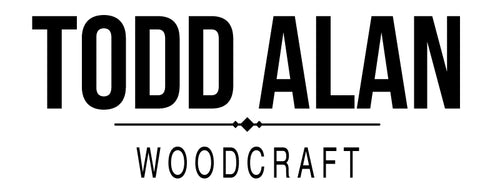Choosing the Right Charcuterie or Serving Board for Your Needs
Not all woods are created equal when it comes to food presentation. The type of wood you choose affects durability, stain resistance, and overall functionality. You may prefer a Hardwood over a softwood due to its strength and ability to resist knife marks. Some hard woods, however, offer unique advantages, such as repelling stains from fruits or resisting moisture from meats and cheeses.
Some people choose a softwood for serving or charcuterie board because they tend to be
lighter and easier to carry, making them ideal for gatherings or outdoor events. Additionally, reclaimed softwoods, such as old-growth fir, often have a unique backstory, adding character and history to the presentation. Softwoods can also offer a distinct, rustic aesthetic with beautiful grain patterns that enhance food displays. Lastly, they tend to be more affordable than hardwoods, making them an accessible option for those looking for a functional yet stylish board.
For both serving and charcuterie boards, some of the hardest woods include maple, walnut, and cherry. Maple is one of the most popular choices due to its durability and fine grain, which prevents deep grooves from knives. Walnut is slightly softer but adds a rich, dark color that enhances the visual appeal of food. Cherry, known for its smooth texture and tight grain, provides a durable and elegant surface that works well for serving various foods.
If you frequently serve berries, wine, or other colorful foods, choosing a wood that resists staining is essential. Maple, Teak and Cherry are excellent choices because their tight grain structure helps repel moisture and stains. Avoid porous woods like beech or open-grained oak, as they tend to absorb liquids and can become discolored over time.
Charcuterie boards need to handle moist and oily foods like cheeses and cured meats without absorbing flavors. Walnut and cherry are ideal because they have a fine, closed grain that resists moisture penetration. Additionally, hickory is a great alternative due to its hardness and resistance to moisture.
For those who prefer the aesthetic of softer woods or want to protect their boards from stains and moisture, using protective coverings are a great option. Decretive plates or wax paper are simple solutions that create a barrier between food and wood.
Additionally, parchment paper is excellent for preventing grease and moisture from seeping into the surface. Natural, non-toxic leaves such as banana leaves, fig leaves or corn husks (for a Latin flavor) can also be used as decorative and functional barriers, adding a unique presentation while protecting the wood from staining and moisture. Also, just remember that softer woods are more apt to get scratched or have cut marks from sharp knives- always make sure to use soft blade knives.
To Sum it Up:
Whether you need a versatile serving board or a dedicated charcuterie board, selecting the right wood ensures longevity and ease of use. If durability and knife resistance are top priorities, maple and walnut are great choices. For stain resistance, hard maple and cherry are excellent options. When placing meats and cheeses, opt for closed-grain woods like cherry or walnut to prevent unwanted moisture absorption.
If using softer or more porous woods, such as old-growth or reclaimed fir or beech, consider protective coverings as mentioned above, to maintain the boards appearance and functionality.
With the right board and precautions based on what you’re serving, your food presentations will look stunning while remaining practical and easy to maintain.


